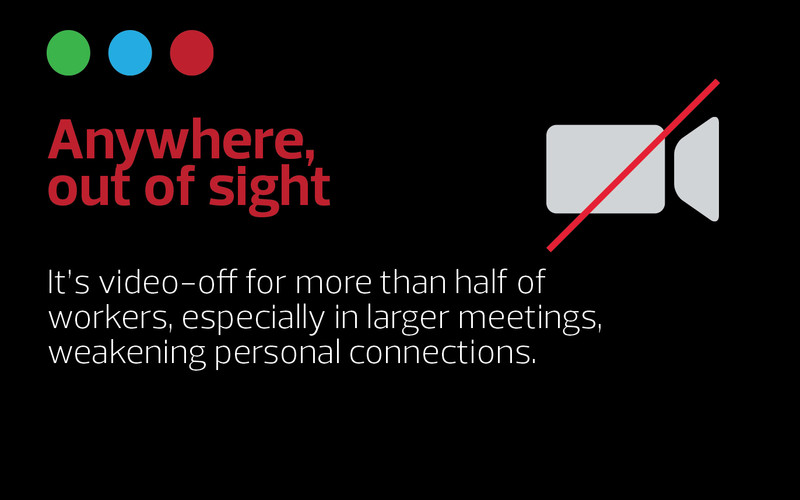For many government agencies, videoconferencing is nothing new. The U.S. District Court of Oregon, for instance, has used video tools for about 15 years to enable remote presentation of evidence and testimony.
In the past, these were expensive, purpose-built solutions that required significant support from IT departments. But over several years — particularly since the COVID-19 pandemic accelerated the trend of remote work — agencies have increasingly adopted user-friendly solutions that keep their entire workforce connected.
The Oregon court and other federal courts around the country share a scalable on-premises video, audio and web communications platform with an intuitive user experience built on technology that leverages a web browser. Where videoconferencing was previously a specialized technology reserved for niche use cases, it is now a regular part of the court system’s everyday workflows.
“Videoconferencing used to be something that I was responsible for, or there would be maybe another two or three other IT staff members to help out,” says Houston Bolles, courtroom technology specialist for the organization.
“If someone wanted to connect over video, we needed to be there to make it happen. But this tool has taken what was before a very specialized technology and just exploded it. Now everybody knows how to do it.”
Will McKeon-White, a senior analyst covering modern technology operations for Forrester, says that government IT leaders should carefully think through how video solutions will be used before agencies make investments.
“There is still a distinct advantage to having a really nice set of cameras, especially if you have multiple people in a room,” he says. “It comes down to where and how you need collaboration to happen.”
Click the banner below to begin modernizing your agency's digital experience.


Standardizing Collaborative Tech
McKeon-White says that organizations are continuing to evolve their video collaboration environments after the boom in the technology over the past several years.
“The main change we’ve seen, really fueled by the pandemic and the immediate aftermath of the pandemic, is the increasing need to centralize and standardize on a single system,” he says.
While the District Court of Oregon also supports other videoconferencing technology, Bolles says the organization has largely standardized on the new tool. “At one point, there were so many different platforms that it felt like staff had to learn something new every couple of days,” he says.
The organization continues to use its existing hardware — including cameras and monitors — in its courtrooms, but the new tool has made the video collaboration process much more intuitive, Bolles says.
“The advantage is that it’s transparent to the outside user. They just connect to the server, whereas before, we spent a lot of time dealing with videoconference protocols,” he says.
“If we’d never connected to a site before, we had to set aside time to do testing. Today, you just dial the seven-digit number, turn the system on and you’re ready to go.”
The court system also uses the technology to facilitate regular meetings between judges and staff at its several sites around the state, as well as to enable daily employee-to-employee collaboration.

The organization’s existing codecs recently reached end of life, and Bolles says it was difficult to decide whether to replace the hardware or transition to a “soft” codec. He predicts that software-centered solutions will take over in the coming years.
“We’ll keep paying attention to what new products are out in the market,” he says. “But what we’re doing now is working, so we’re going to do it for a while longer.”
Choosing the Right Collaboration Tools for the Mission
The Food and Drug Administration largely relies on Zoom for large external meetings, with Microsoft Teams the primary tool for peer-to-peer collaboration throughout the agency.
“Because Teams is connected to the Microsoft 365 applications, that gives employees a lot of additional capabilities,” says Josh Lehman, director of the Office of Business and Customer Assurance in the FDA’s Office of Digital Transformation.
“For internal meetings and to support hybrid work, it makes a lot more sense to use Teams. Where Zoom shines is with more polished production aspects that you might want for a larger event,” Lehman says.
At the FDA, Lehman says, video is used by “pretty much everyone, all the time.” Notably, use of the technology has not dropped off as employees have returned to the physical office, he says.
“Even if somebody is just down the hall, people are finding it easier to fire up a chat or maybe do a quick call,” he says.
Today, you can just dial the seven-digit number, turn the system on and you’re ready to go.”
Houston Bolles
Courtroom Technology Specialist, U.S. District Court of Oregon
While some organizations have struggled with lackluster video meetings — where users leave their cameras off and meeting leaders struggle to spur engagement — Lehman says that video collaboration at FDA is typically a dynamic, interactive experience for employees.
“Cameras are turned on more than ever, and people are very active in the chat,” he says. “The chat gives staff an opportunity to comment and ask questions. We get much more robust feedback from all of the staff, rather than just the folks who jump in and talk. The meetings have become a lot more inclusive.”
Although video collaboration has become ubiquitous, Lehman notes the technology is still evolving rapidly; take the emergence of AI-powered speaker tracking features, for example.
New tools can also segment video of in-person meeting participants and deliver it to remote users in the familiar Brady Bunch box format rather than forcing remote participants to view a static, wide-angle shot.
“Training on these newer features is a really important component for successful hybrid meetings,” Lehman says. “When people know how to use the tools, the focus of these meetings stays on the mission, rather than the technology.”
Enabling Remote Work Is a 'Game Changer'
In early 2020, the U.S. Fish and Wildlife Service standardized on Teams for video collaboration — a move that John McDowall, chief of customer support, calls “a game changer.”
“That was a tool that we didn’t have before,” McDowall says. “We didn’t have this instant collaboration, where you could literally click a couple buttons and have a video call. It really didn’t exist in the federal workspace, other than as very expensive video teleconferencing equipment. Before, you needed a $30,000 video meeting room, and now this technology is on every computer. It’s been a big thing for us.”
Back to the article
Autoplay
Full Screen
Grid View
Exit Full Screen
Back to the article
Autoplay
Full Screen
Grid View
Exit Full Screen
The consumerization of video technology has not only facilitated peer-to-peer collaboration, but has also made the technology in dedicated meeting rooms much more intuitive, McDowall says.
“The old technology was just too difficult to use,” he says. “That was the main complaint we were getting. Users said it didn’t work consistently and that it was cumbersome. You had to have someone from IT who could operate the equipment.
“Teams changed all that, and it’s helped us to make the experience more user-friendly. Literally, now employees come in and they push two buttons on a touch screen, and everything fires up for them.”
McDowall, himself a remote employee, notes that there is “no way” he could do his job without Teams. The platform also helps the agency save time and money, he says.
“We’ve seen savings in travel costs, and the government saves money because we’re spending less on that video technology. And features like real-time co-authoring on documents have made us more productive because employees can get more done in a shorter period of time.”
Perhaps most important, McDowall says, Teams is fostering connections throughout an agency with 10,000 employees spread across more than 700 sites — many of them in relatively remote areas of the country.
“It brings everybody together,” he says. “Even if you’re out in a field office with five people, you can still be a part of the conversation.”
40%
The percentage of federal employees who work remotely one or more days per week
Source: Office of Personnel Management, Federal Employee Viewpoint Survey Results, November 2023
PHOTOGRAPHY BY ROBBIE MCCLARAN

















